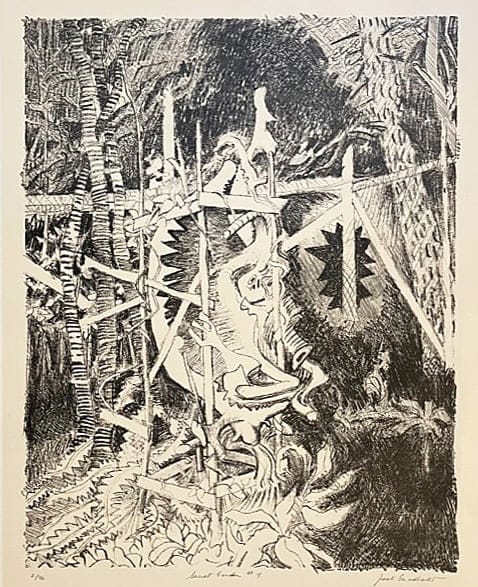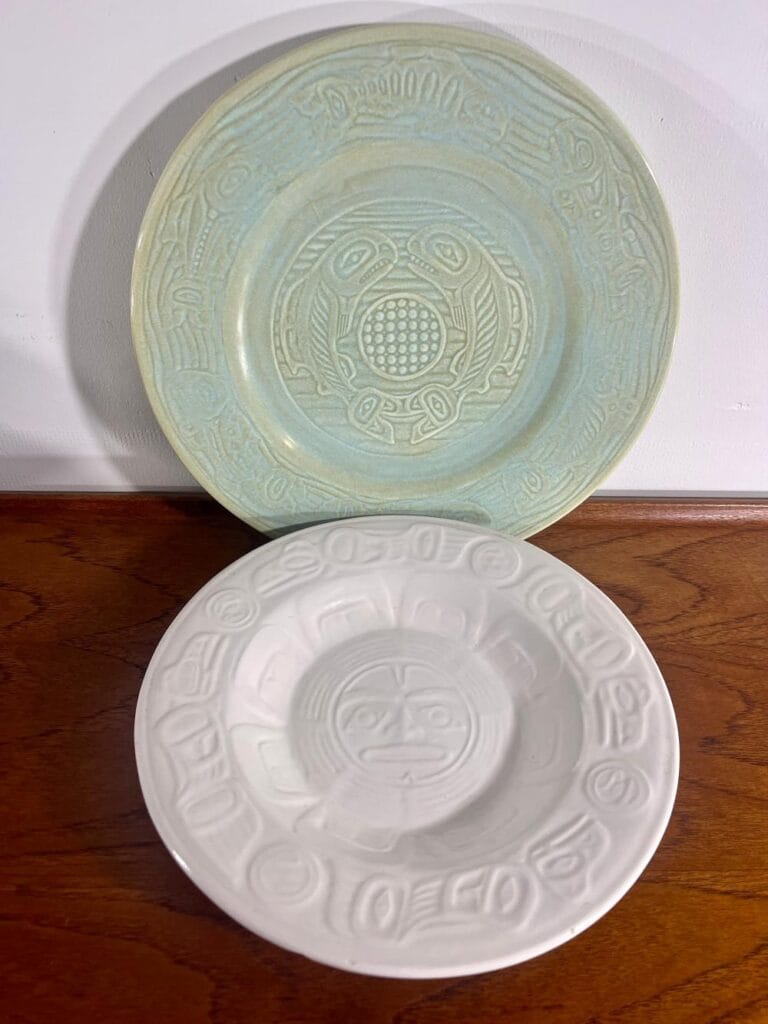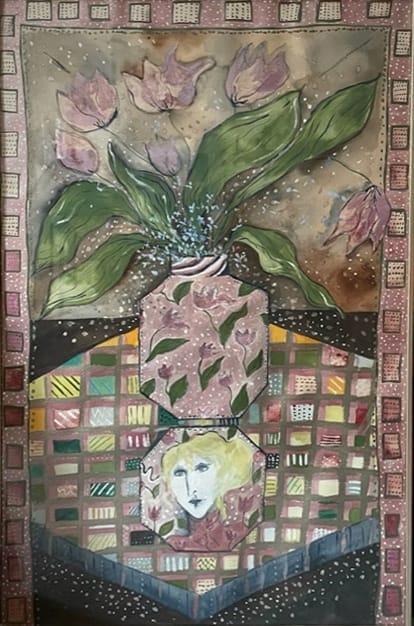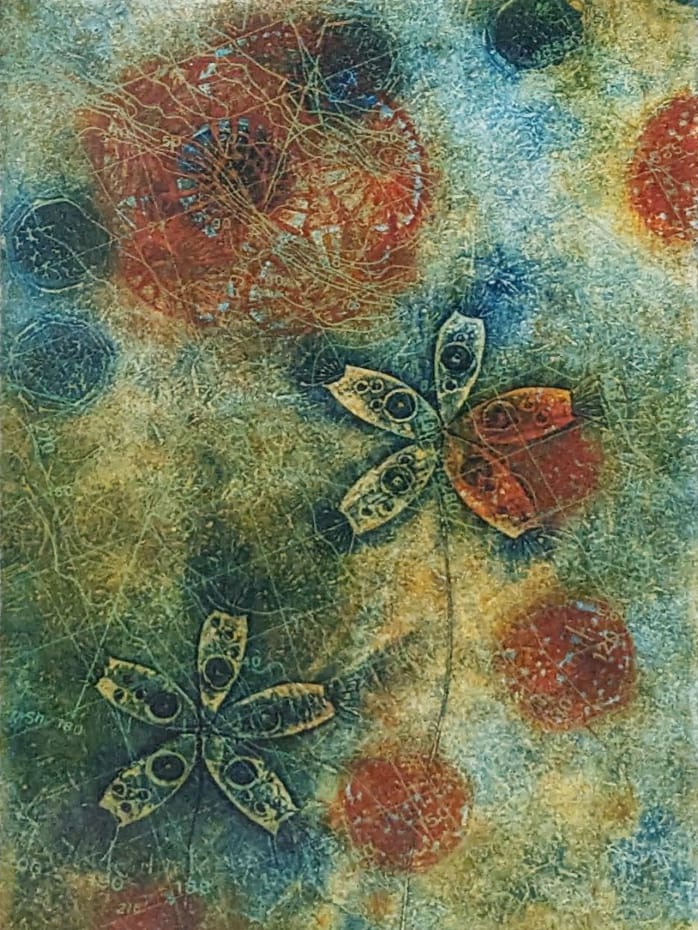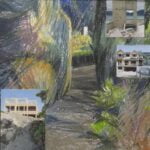1909-1998 → Modernist painter Jack Shadbolt was deeply influenced by the landscapes and cultures of the West Coast. He participated in the international dialogue of modernism and postmodernism, but his interests were local to BC, and his works played a major role in the emergence of a distinctive regional style focused on nature-inspired abstraction. Shadbolt’s work has been described as unconventionally beautiful and unsettling, designed to have optimum visual impact due to their size, bright colours and rooted construction of forms. He worked in large series and in a variety of styles and subjects throughout his career, creating prints, watercolours and paintings using mixed media.
Born in England in 1909, Shadbolt came to Victoria, BC with his family in 1912. He studied art at Victoria College in 1927 and shortly thereafter, met Emily Carr who would become a lifelong influence. Shadbolt viewed his education as ongoing, studying at the Vancouver School of Decorative and Applied Arts in 1931 and later taking classes at the Euston Road School in England in 1937, followed by studies in Paris at The Adacemie-Grande Chaumiere and the Andre Lhote School of Art in 1938. He enlisted in the Canadian Army in 1942 and was eventually sent to London in 1945 to work for the Canadian Army War Artists Administration where he sorted and catalogued photographs of concentration camps. The ravaged city of London and his daily work left a strong impression, the effects of which would appear in his work for years to come.
Post war (1948), he moved to New York with his wife Doris where he attended classes at the Art Students’ League. His time there also contributed an impression on his practice – Picasso, surrealism and early Abstract Expressionism were strong influences. An influential teacher, Shadbolt taught both painting and drawing at the Vancouver School of Art (1937-1942, 1945-1966). In 1955, he became the first instructor at the Emma Lake Workshop, Regina College, Saskatchwan. He wrote and published three books: “In Search of Form”, “Mind’s I” and “Act of Art”. In 1988 he and Doris established the Vancouver Institute for the Visual Arts (later called the Jack and Doris Shadbolt Foundation for the Arts), an organization granting awards to BC visual artists. Shadbolt represented Canada in exhibitions around the world, including the Venice Biennale XXVIII and exhibited in all major public galleries across Canada over the span of 60 years. He had four major retrospective exhibitions at the Vancouver Art Gallery, the BC Museum of Anthropology, the National Gallery of Canada and the Glenbow Museum. Jack Shadbolt died in a bed set up at his studio and surrounded by his own work in 1998. He was 89.
“Inspiration for the artist is probably less in dreaming than in visualizing extensions from tangible possibilities.” Quote from Fairmont Pacific Rim Press Release: Fairmont Pacific Rim Announces Jack Shadbolt Solo Exhibition of Artworks, published March 2024: https://www.fairmontpacificrim.com/press/jack-shadbolt/
For all you deep art divers out there.
More on Jack Shadbolt from the Feckless Collection
The Jack and Doris Shadbolt Foundation for the Visual Arts Website
More on Doris Shadbolt
More on the Emma Lake Artists’ Workshops
More on the Venice Biennale
Article from The Tyee: Jack Shadbolt and Emily Carr – An Unlikely Friendship
The Canadian Art Preservation Foundation posts short biographies and information on artists and artwork from its collection in a not-so-subtle attempt to capture your attention and interest in our mission, but we also just want to keep this artwork in view. We are excited about the art we collect and want to share it with you. CAPF is a non-profit organization dedicated to preserving the artwork of Canada’s superstar artists for future generations to examine, study and exhibit – the ones you know and the ones you might not know so well. We accept artwork, journals, notes, letters, exhibition catalogues and anything else that might comprise a visual and/or intellectual “portrait” (ahem, please pardon the pun) of a particular artist.
View more artwork from our CAPF Collection and if you’d like, Donate Here.
We archive, preserve and promote Canadian art.
